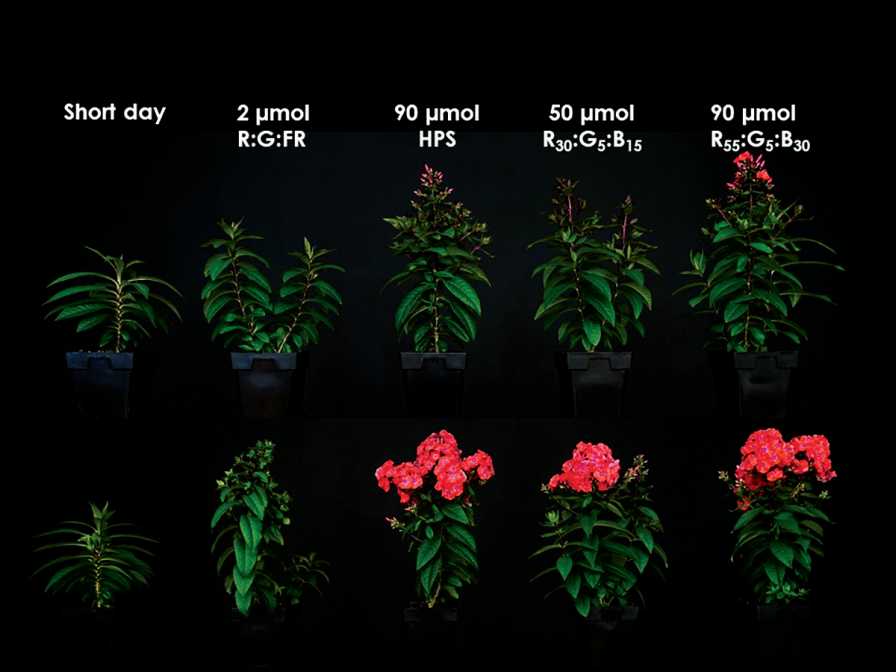Growers who force perennials into flower know they will fly off the bench at retail, as most perennials are sold without flowers. Consequently, growers are looking for easy and profitable forcing protocols to produce a wide variety of high-quality flowering perennials in the spring. Until recently, growers used incandescent lamps (INC) to provide low-intensity (~1 to 3 µmol∙m−2∙s−1) photoperiodic lighting to extend the day or interrupt the night. These lamps provided a low-red to far-red light ratio (R:FR) that induced long-day plants into flower. Unfortunately, a low R:FR can also result in unwanted stem elongation and stretching. However, the absence of far-red light can result in a delay or absence of flowering. Recently, screw-in flowering light-emitting diodes (LEDs) providing a R:FR similar to now phased-out INC lamps have come on the market. Conversely, some growers utilize existing high-intensity supplemental lighting fixtures such as high-pressure sodium (HPS) lamps to create long days, as they provide red and far-red light that also induce flowering of long-day plants. Generally, a higher daily light integral (DLI) from supplemental lighting results in a higher quality crop (i.e., more flowers, branches, and more compact plants), and flowering is hastened. As LED efficiencies have increased, the use of LEDs for supplemental lighting as a replacement for HPS has increased as well. However, the question of whether LEDs used for supplemental lighting will be as effective in promoting flowering as HPS lamps arises, as most do not provide far-red light. Recent studies at Michigan State University have suggested that photoperiodic lighting providing a moderate intensity (≥15 µmol∙m–2∙s–1) of blue light can also induce long-day plants into flower, thus eliminating the need for far-red light. Additionally, a moderate amount of blue light can result in slightly more compact crops. Therefore, we wanted to determine if light-emitting diode (LED; LumiGrow Pro 650e SV) supplemental lighting providing blue:green:red (B:G:R) light in µmol∙m−2∙s−1 B15:G5:R30 (total of 50 µmol∙m−2∙s−1) or B30:G5:R55 (total of 90 µmol∙m−2∙s−1) would 1) induce long-day perennials into flower and 2) provide sufficient increases in quality and reduction in crop time to justify the input costs. Plants used : […]






